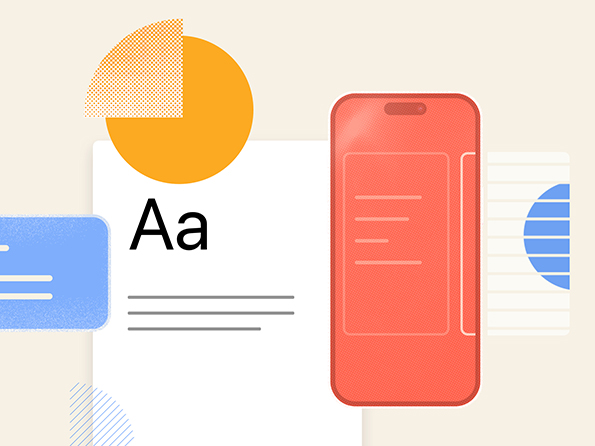Implications of the Coming Google Analytics 4 Update
You may have heard that big changes are on the way. Here’s the scoop.
Google Analytics (GA) is a free website analytics tool that helps businesses and organizations better grasp website performance by collecting data and sorting it into all kinds of useful and insightful information. It helps evaluate and measure how marketing strategy, content, and products perform relative to user engagement.
Perhaps most important for marketing folks, it quantifies the attribution of marketing efforts. Understanding the customer journey from marketing touchpoints like ads, emails, public relations, and SEO link building can help refine a marketing mix, doubling down on what works and trimming away efforts that don’t show a return.
Since 2012, Google Analytics has organized user data under a reporting model known as Universal Analytics (UA). But, a new version of Google Analytics (GA4) is replacing Universal Analytics in July 2023, and this change will impact every business using GA to analyze web and native app performance.
Worried about what this means for your website? Never fear! Here, we’ll walk you through how GA works, how GA4 differs, and what these changes will mean for your business.
How it Currently Works
Google Analytics offers insight into business owners’ most common questions: who is visiting my site, where did they come from, and did they do what I wanted them to do? GA’s data collection and reporting capabilities answer these questions and more, offering powerful insight into a website’s efficacy as a marketing and business tool.
To add GA to a website, you add just a few lines of tracking code into the HTML of the site. This tracking code interacts with Google’s servers and records each user’s actions within the site and other information attached to that user’s digital account. For example, suppose someone is logged into their Google account while browsing online and visits your website. In that case, the GA tracking code will recognize the age and gender associated with that user account. The recorded information is then sorted into different categories and reports within GA.
Within the Universal Analytics (UA) reporting model, marketers could access reports that categorized data at the following levels:
- Users (i.e., the actions taken by users)
- Sessions (i.e., individual visits to the website)
- Hits (i.e., insights into individual pages, the total number of button clicks, video views, etc.)
The UA reporting methods that have been part of the service since 2012 will be retired in July 2023, at which point, all web traffic reporting will be handled by Google Analytics 4 (GA4).
Impact & Benefits
GA4 reporting uses a measurement model based on events and parameters; every user interaction is captured as an event, e.g., loading a page, clicking a link, or completing a purchase. Different events fall under different categories, including automatically collected events, enhanced measurement events, recommended events, and custom events.
According to NYC SEM founder and Google Analytics wizard Dr. Darren Carter, this is probably the biggest challenge for those switching to GA4. Having all these different categories of events is completely different from the events in UA, which were all custom events. It’s likely that these event categories are utilized in the AI modeling of visitors, so having some accuracy in their setup will help improve the accuracy of the account. Since these accounts can be integrated into the Google Ads platform, having an accurate setup helps to create useful audience data that now underlies much of the platform’s audience reach and bidding algorithms.
“One of my top reasons for marketers to move to GA4 is that it offers data-driven attribution modeling. This modeling uses account history to distribute the value of each channel’s contributions to a sale. This can help you improve your marketing mix based on actual performance.” – Dr. Carter
GA4 also offers reporting insights categorized by different customer lifecycle points — acquisition, engagement, monetization, and retention. Currently, UA reporting only offers acquisition insights, so the expanded reporting capabilities of GA4 should provide more visibility into the other parts of the user journey.
One significant benefit of the shift to GA4 is that the new tracking model combines web and mobile app data. Being able to measure app and web activity together within a single report will make it easier to map a user journey across platforms. Note: Google is still maintaining a separate Analytics product for mobile apps called Firebase. GA4 is a solution for businesses who expect that users/customers may bounce back and forth between app and site.
GA4 also accounts for increasing privacy concerns by relying on machine learning to do predictive modeling instead of third-party cookies. Third-party cookies allow user information and preferences to be tracked across the web, giving advertisers much more data to use for targeting. But Apple, Google, and Mozilla have all announced plans to phase out support for third-party cookies in their web browsers in response to user privacy concerns. The loss of third-party cookies will make it much harder for advertisers to track users across the web and serve them targeted ads.
How to Prepare
The migration for many of us from GA2 (Classic Analytics) to GA3 (Universal Analytics) was relatively painless ten years ago. This migration isn’t quite as simple. Now is the time to take action and set up GA4.
First, check if your Google Analytics property is impacted. If you created your property before October 14, 2020, you’re likely using a Universal Analytics property. If you created your property after October 14, 2020, you’re likely already using a Google Analytics 4 property, and no action is required.
While the changes in GA4 are positive overall, GA4 is very different from UA. The sooner you set up GA4, the more time your team will have to get familiar with the new reporting capabilities — and the less work they’ll have to do next year. Moving UA to GA4 isn’t as simple as hitting an “upgrade” button. While some reporting options in GA4 begin automatically upon its setup, others require additional configuration. By setting up GA4 now, you will have more time to find and fix any breakdowns in reporting.
Plus, the sooner a business adds GA4 to its website, the more historical data and insights you will have in GA4. Year-over-year data provides important information about how website activity changes over time. This is the best reason to make sure GA4 is running. You can never get back historical data that you missed, and not having comparisons means you are losing out on one of the most important aspects of the platform.
Furthermore, Google will delete your historical UA data beginning on January 1, 2024. Until July 1, 2023, you can continue to use and collect new data in your Universal Analytics properties. After July 1, 2023, you’ll be able to access your previously processed data in your Universal Analytics property for at least six months. You should plan on archiving this data in case you need to reference it in the future. First, determine what data you regularly need. Then consider the intervals in which you access this data – e.g. monthly. You’ll want to archive your data to match these data usage habits.
To start making the switch to GA4 today, check out this Google guide.

About north street
We engineer the thoughtful transformation of great organizations. Our proven process helps us understand what your competitors are doing right — and wrong. Want to learn more? Let’s chat.



























